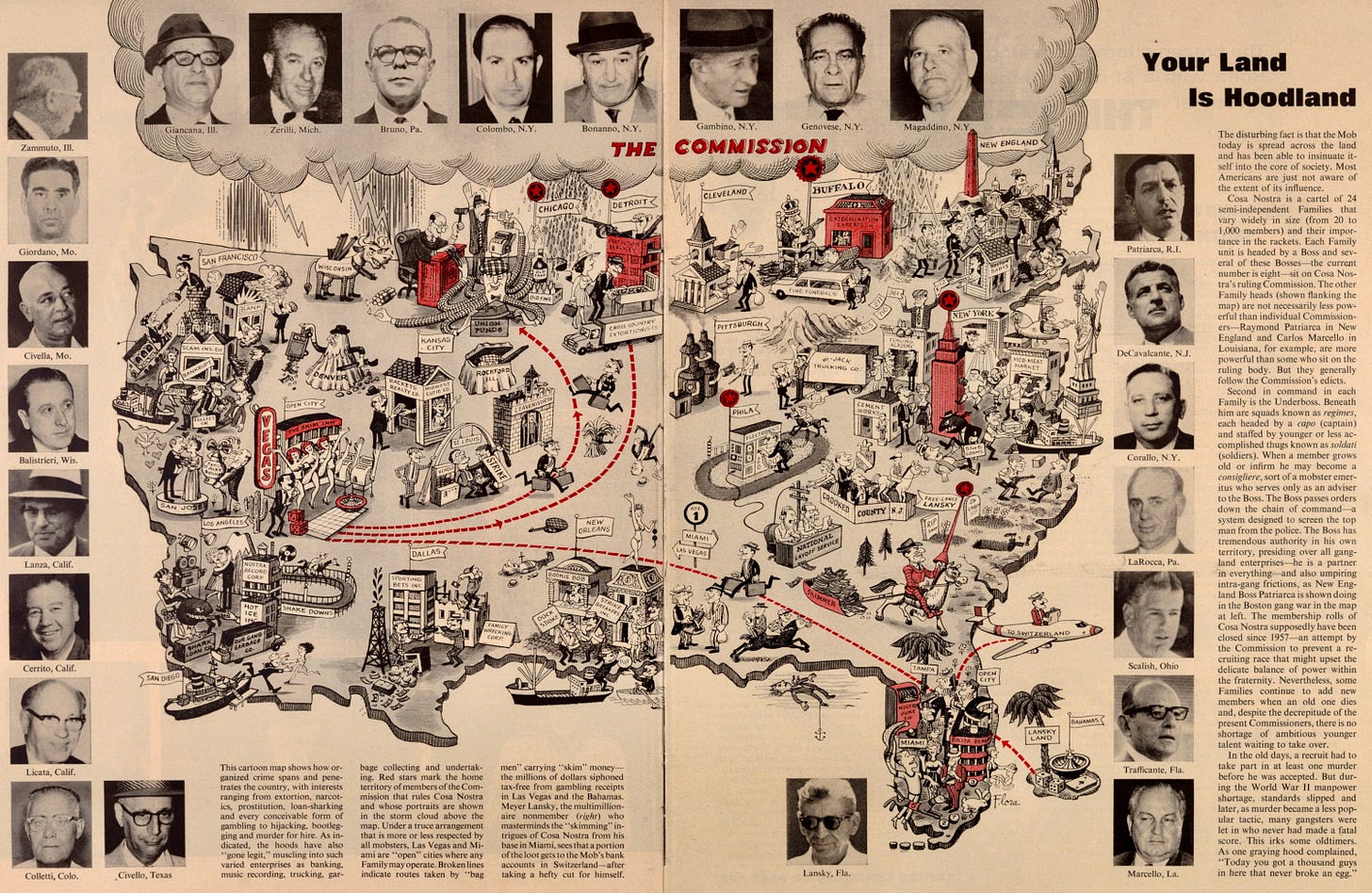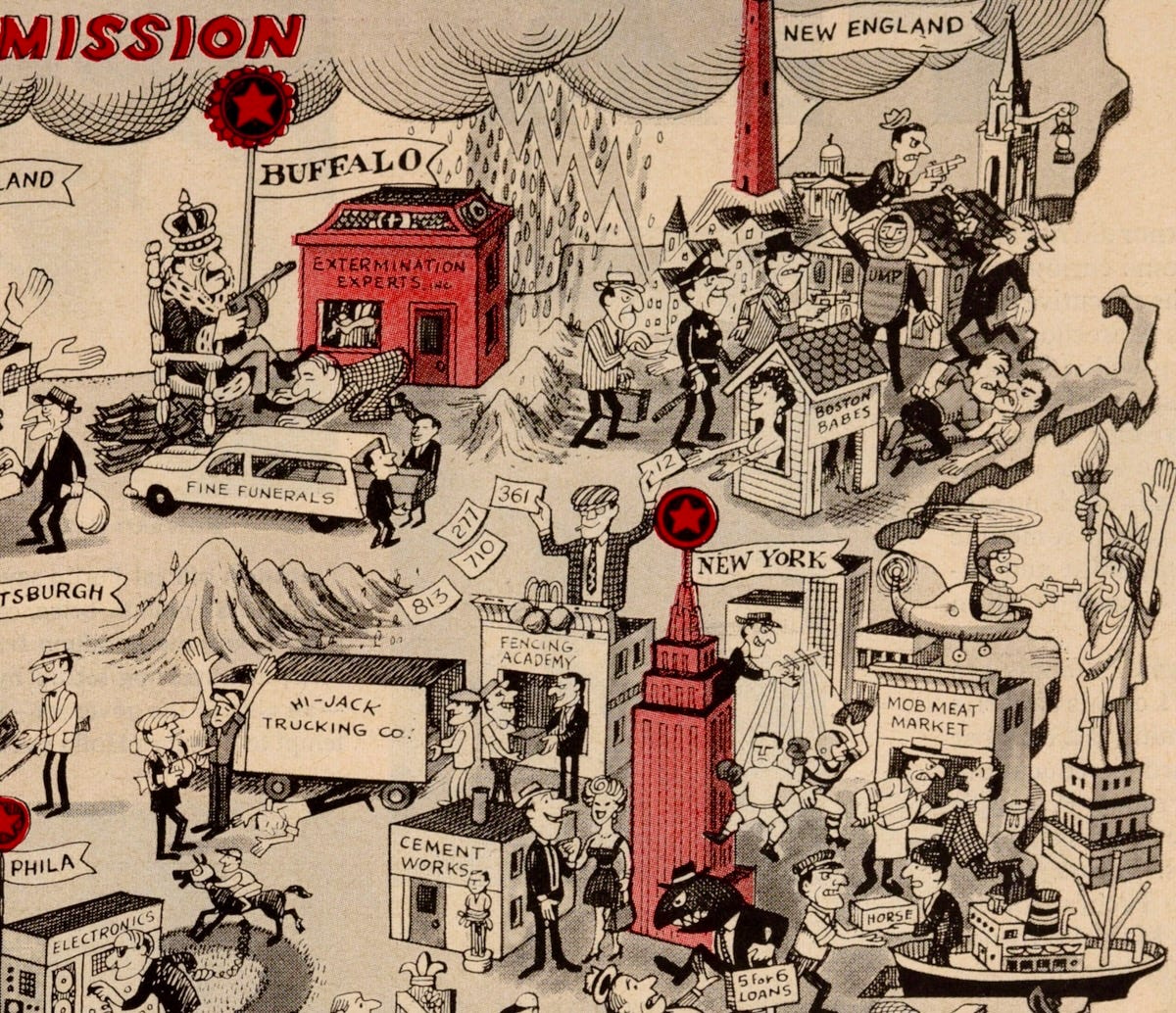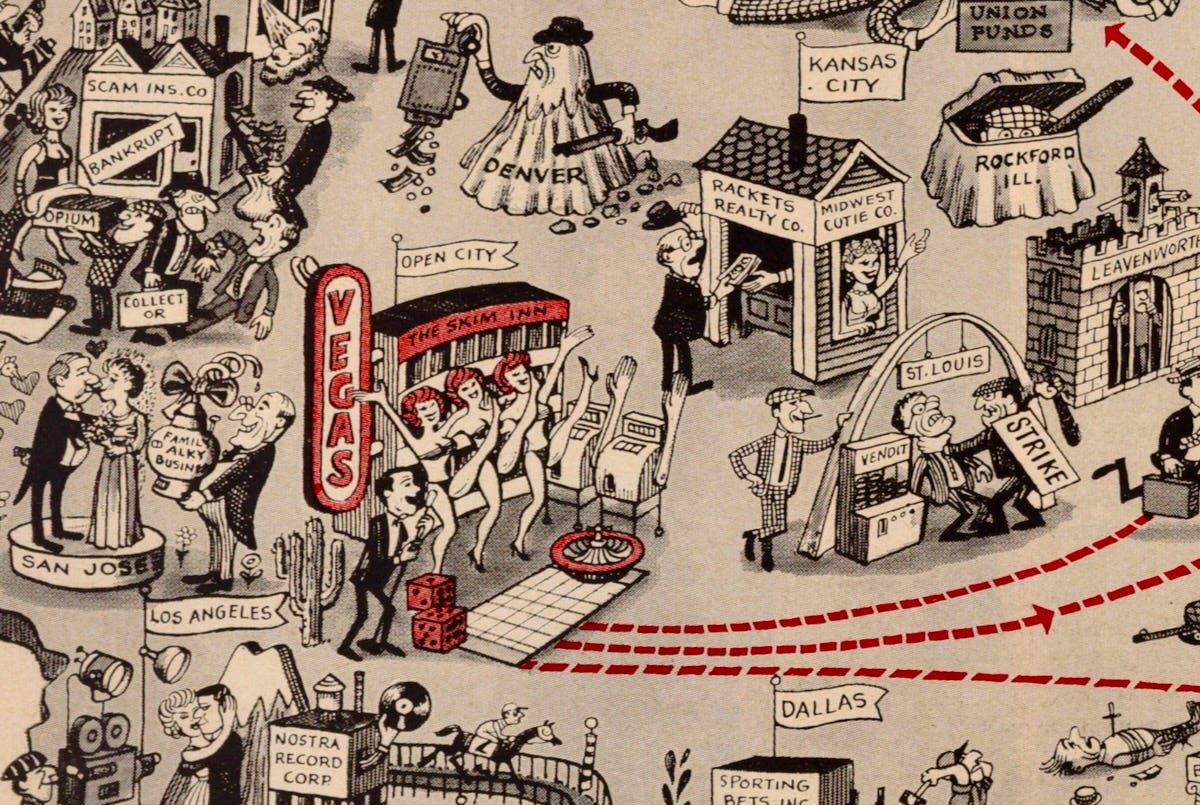The map “The Commission” by Jim Flora was a colorful and whimsical illustration of the mafia’s organization and operations in the United States. This cartoon map shows how organized crime spans and penetrates the country, with interests ranging from extortion, narcotics, prostitution, loan-sharking and every conceivable form of gambling to hijacking, bootlegging and murder for hire," as well as "muscling into such various enterprises as banking, music recording, trucking, garbage collecting and undertaking." The text includes this mobster’s observation:
In the old days, a recruit had to take part in at least one murder before he was accepted. But during the World War II manpower shortage, standards slipped and later, as murder became a less popular tactic, many gangsters were let in who never had made a fatal score.
This irks some oldtimers. As one graying hood complained, "Today you got a thousand guys in here that never broke an egg."
Pictures of leading crime figures surround the map, including Meyer Lansky and the heads of the Five New York Crime Families.
The 1967 series in Life Magazine on the mafia was a three-part exposé that revealed the extent and influence of organized crime in the United States. The series was based on a two-year investigation by Life reporters and photographers
The first part, titled “The Brazen Empire of Organized Crime,” was published on September 1, 1967. It described the structure and hierarchy of the mafia, the names and territories of the major crime families, and the methods and motives of mob violence. It also profiled some of the most notorious mobsters, such as Joe Bonanno, Carlo Gambino, and Sam Giancana. It featured “The Commission Map” - created by Jim Flora - an American artist and illustrator, best known for his jazz album covers and children’s books.
You can read the entire article here. Hat tip to link from Samuel Chapman /
.The second part of the series, titled “The Crime Cartel,” was published on September 8, 1967. It focused on the illegal activities and businesses of the mafia, such as gambling, narcotics, labor racketeering, loan-sharking, and extortion. The third part, titled “The Mob,” was published on September 15, 1967. It explored the social and cultural aspects of the mafia, such as its code of honor, its rituals and ceremonies, its family ties and traditions, and its influence on popular culture.
The 1967 series in Life Magazine on the mafia was a landmark in journalism and public awareness. It sparked a nationwide debate and outrage over the problem of organized crime. It also inspired further investigations and prosecutions by federal and state authorities. The series won several awards and accolades for its courage and quality.
Want another mobster’s map?
Chicago's Gangland Map and Dictionary (1931)
Bruce-Roberts’ map of Chicago’s “gangland,” produced in 1931 and “designed to inculcate the most important principles of piety and virtue in young persons and graphically portray the evils and sin of large cities,” is a sensational and humorous approach to documenting crime in the city. Bruce-Roberts is not a person, but a company.…
Title: The Commission
Creator: Jim Flora
Date: 1967
Source: Life Magazine, September 1, 1967, pp. 20-21.
Collection: P.J. Mode collection of persuasive cartography, #8548. Division of Rare and Manuscript Collections, Cornell University Library.








Unprecedented.
I shall have to go and have a look for those articles.
Does this overlap with the period when the FBI was maintaining that the mafia didn't exist in the USA?